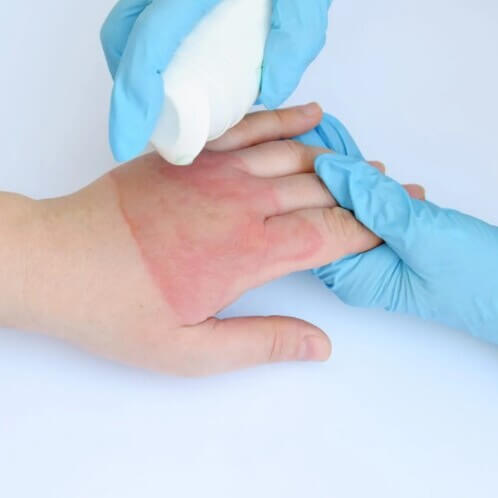What Is Reconstructive Surgery?
Reconstructive surgery is a surgical specialty that focuses on the repair, restoration, or reconstruction of defects or injuries to the body. This type of surgery is typically performed to improve function or appearance, and it is often used to address congenital abnormalities, traumatic injuries, or medical conditions that have resulted in tissue damage or loss.
One of the most common types of reconstructive surgery is breast reconstruction, which is performed after a mastectomy or lumpectomy for breast cancer. This surgery can help restore a woman’s confidence and sense of femininity after undergoing cancer treatment.
Another common type of reconstructive surgery is facial reconstruction, which is often used to repair defects caused by trauma, cancer surgery, or congenital abnormalities such as cleft lip and palate. This type of surgery can improve facial appearance and function, as well as improve a person’s quality of life.
Reconstructive surgery may also be used to repair damage caused by burns, to address hand and wrist injuries, or to treat conditions such as carpal tunnel syndrome.

What Kind of Diseases Does Reconstructive Surgery Deal with?
Hand Surgery: It aims to restore the functionality of the hand, wrist, and fingers affected by injuries, diseases, or congenital deformities. It may involve reconstructive or microvascular techniques to repair tendons, nerves, bones, and blood vessels in the hand and wrist.
Bone Disease Treatments: Bone diseases are conditions that affect the strength, density, and structure of bones. Treatments for bone diseases vary depending on the type and severity of the condition. They may include medications, physical therapy, surgery, or a combination of these approaches.
Congenital Anomaly Treatments: Congenital anomalies are abnormalities that occur during fetal development and can affect any part of the body. Treatment for congenital anomalies depends on the type and severity of the condition, and may include surgery, medications, physical therapy, and other supportive therapies.
Breast Reconstruction Surgery: It is a surgical procedure to rebuild the breast(s) after mastectomy or lumpectomy due to breast cancer or other conditions. The surgery aims to restore the shape, size, symmetry, and appearance of the breast(s) using various techniques, such as implants, tissue transfer, and nipple reconstruction.
Facial Paralysis: Facial paralysis is a condition that affects the muscles of the face, causing weakness or paralysis on one or both sides of the face. Treatments for facial paralysis depends on the underlying cause and severity of the condition, and may involve medication, physical therapy, surgery, or a combination of these approaches.
Face and Jaw Surgery: It is a type of surgery that aims to correct various facial and jaw deformities, such as misaligned jaws, facial asymmetry, facial trauma, and congenital anomalies. The surgery may involve bone reshaping, soft tissue reconstruction, and/or implantation of prosthetic devices.
Burn Scar Surgery: Burn scars are the result of thermal, chemical, or electrical burns that damage the skin and underlying tissues. Burn scar surgery aims to improve the appearance, function, and mobility of the affected area by removing the scar tissue, reconstructing the skin and soft tissues, and/or applying skin grafts or flaps.
What Is Reconstructive Surgery Procedure?
Reconstructive surgery can involve a range of techniques, including skin grafts, tissue expansion, and flap surgery. Skin grafts involve taking skin from one part of the body and transferring it to the damaged area. Tissue expansion involves stretching the skin over a period of time to create new skin to cover the damaged area. Flap surgery involves taking tissue, muscle, and skin from one area of the body and moving it to the damaged area.
Reconstructive surgery can be performed on any part of the body, including the face, breast, hand, and limbs. It can be performed under local or general anesthesia, depending on the extent of the procedure.

Benefits and Risks of Reconstructive Surgery
While there are many benefits to reconstructive surgery, it’s important to also consider the potential risks and complications.
Benefits of Reconstructive Surgery
- Improved Physical Function
- Restored Appearance
- Improved Quality of Life
- Correction of Congenital Deformities
- Reconstruction After Trauma
Risks of Reconstructive Surgery
- Infection
- Bleeding
- Pain
- Scarring
- Anesthesia Complications
- Unsatisfactory Results
How to Care After Reconstructive Surgery?
Here are some tips on how to care after reconstructive surgery:
- Your surgeon will explain to you the detailed postoperative care instructions. It is essential to follow them precisely to ensure a safe and smooth recovery.
- Keeping the surgical area clean is essential to prevent infection. Gently clean the area with mild soap and water and pat it dry with a clean towel.
- Rest is crucial after surgery for healing. Avoid strenuous activities, heavy lifting, or bending over, as it may put pressure on the surgical area and delay the healing process.
- As a way of managing pain and preventing infection, your surgeon may prescribe pain medications or antibiotics.
- Depending on the type of reconstructive surgery, your surgeon may recommend wearing compression garments to promote healing and reduce swelling.
- Follow-up appointments are crucial to ensure that you are healing correctly and there are no complications. Attend all appointments scheduled by your surgeon and discuss any concerns or questions you may have.
- A healthy diet is essential to promote healing after surgery. Eat a balanced diet rich in protein, vitamins, and minerals to help your body heal.
What Is The Difference Between Reconstructive Surgery And Cosmetic Surgery?
Reconstructive surgery and cosmetic surgery are both types of plastic surgery, but they serve different purposes. Reconstructive surgery is performed to improve the function or appearance of a body part that has been affected by injury, disease, or a congenital abnormality. The goal is to restore the body part to its normal or near-normal function and appearance.
On the other hand, cosmetic surgery is performed to enhance the appearance of a body part that is otherwise functioning normally. The goal is to improve the aesthetic appearance of the body part, such as reshaping the nose or removing excess fat from the abdomen.
While both types of surgery can involve similar techniques and procedures, the primary difference lies in the purpose and goals of the surgery. Reconstructive surgery is often medically necessary, while cosmetic surgery is usually elective and performed for personal reasons.
Reconstructive Treatments
Reconstructive Surgery FAQ
How to Prepare for Reconstructive Surgery?
- Follow any pre-operative instructions provided by your surgeon, such as avoiding certain medications or food before surgery.
- Arrange for someone to help at home during your recovery period.
- Discuss any concerns or questions with your surgeon ahead of time.
- Have realistic expectations about the outcome of the surgery.
What Conditions May Require Reconstructive Surgery?
Reconstructive surgery may be necessary for a variety of conditions, including:
- Birth defects or congenital abnormalities, such as cleft lip and palate or webbed fingers or toes
- Trauma or injury that has resulted in tissue damage or loss
- Surgery that has resulted in significant tissue loss or deformity
- Chronic infections that have caused tissue damage or loss
- Severe burns that have caused scarring or contractures
What Is The Recovery Time After Reconstructive Surgery?
In general, patients can expect some level of pain and discomfort after the surgery, which can be managed with medication prescribed by the surgeon. The length of the hospital stay and recovery period will also depend on the type of reconstructive surgery.
For minor procedures, such as scar revision or mole removal, patients may be able to return to normal activities within a few days to a week. However, more complex procedures, such as breast reconstruction or facial reconstruction, may require several weeks or even months of recovery time.
How Long Does Reconstructive Surgery Take?
On average, reconstructive surgeries can take anywhere from 1 to 10 hours, but some procedures may take even longer. The duration of the surgery can also depend on the surgeon’s experience and expertise, as well as the availability of advanced surgical techniques and technology.
For example, breast reconstruction surgery can take between 1 and 8 hours, depending on the type of procedure and whether it is done in one or multiple stages. On the other hand, a patient with a complicated medical history, such as diabetes or heart disease, may require a longer surgery time due to the need for more careful monitoring and management of potential complications.
Possible Complications and How to Manage Them?
As with any surgical procedure, there are potential risks and complications associated with reconstructive surgery. These may include bleeding, infection, poor wound healing, and adverse reactions to anesthesia. Your surgeon will take measures to minimize these risks, and you should follow all postoperative instructions carefully to reduce the chances of complications














